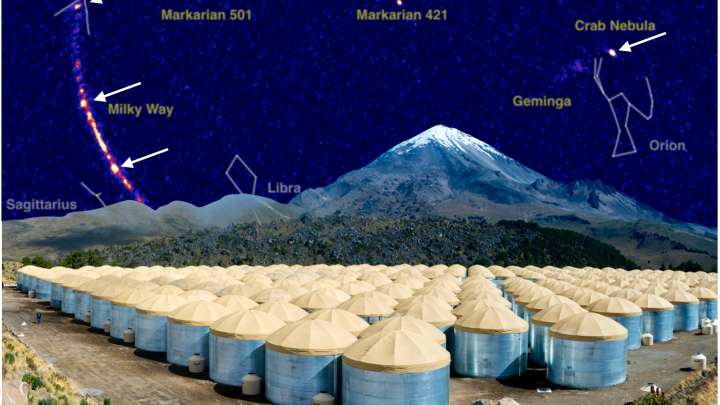The Speed Of Light Remains Constant At The Highest Energy Tested Yet
The fact that the speed of light is constant in a vacuum is one of the cornerstones of Einstein’s theory of special relativity. But it’s not obvious why this should be the case, or even whether it’s possible, under certain conditions, that it might not be. A new study, published in Physical Review Letters, set out to test if the speed of light remains constant even at the highest energy we can get from cosmic events.
Special relativity has at its core two facts: That the speed of light in a vacuum doesn’t change and that the laws of physics are identical whether an observer is still or moving at a constant velocity. This latter part is called the Lorentz Invariance. All the tests we’ve got so far suggest that the speed of light is constant and the Lorentz Invariance is valid, but theoretical frameworks suggest that this might not be true at high enough energies. Under those conditions, relativity might not hold true anymore and physicists want to probe where the cracks of our theories might happen.
Unfortunately, we can’t use our particle accelerators to reach those incredible energies but the universe has provided us with an alternative. Certain powerful events in the cosmos can produce really energetic gamma-ray photons that allowed scientists to put special relativity and the speed of light to its most stringent test yet. The team used the High-Altitude Water Cherenkov (HAWC) observatory in Puebla, Mexico to obtain observations of record-breaking gamma rays. With those, the researchers were able to extend the range for which the Lorentz Invariance holds by a factor of 100 times.
But how would you tell if there was something wrong with relativity? How would these gamma-rays appear different? If the Lorentz invariance is violated, researchers expect that some effects will become more and more clear the further we are from the source of the gamma-rays. But none of these telltale signs were seen in the observations.
“The speed of light is known to be constant (within uncertainties) in all current observations. However, at the highest energies (greater than 1028 times more energetic than standard light) relativity begins to be affected by quantum physics,” co-author Pat Harding, an astrophysicist in the Neutron Science and Technology group at Los Alamos National Laboratory, told IFLScience.
“And in quantum physics, Lorentz Invariance and therefore the constancy of the speed of light break down. So, by pushing searches of the speed of light to ever-higher energies, we can hopefully get a glimpse of the behavior of the physics of String Theory or Quantum Gravity.”
The HAWC observatory has recently had an upgrade both in detector-improvements as well as having an “outrigger” extension, which has increased the observations area by a factor of four. This will allow for even higher-energy testing.
“At the highest energies, this will improve HAWC’s sensitivity by 2-4x and will increase both the number of sources observed at the highest energies and extend the energy range at which sources are seen,” Harding continued. “These improvements will push out knowledge of the speed of light to even higher energies than the current study.”
So for now, the speed of light continues to be, alongside death and taxes, about the only constant of the universe.



